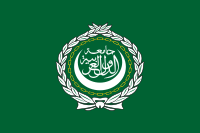Somalia launches major vaccination drive to protect over 3 million children from measles, polio, and pneumonia.
Somalia’s Mass Vaccination Drive Targets 3 Million Children Against Polio and Pneumonia


Somalia began a nationwide vaccination campaign on Monday aimed at protecting children from measles, polio, and pneumonia, with a target of reaching more than 3 million children across the country.
The World Health Organization (WHO), in collaboration with Somalia’s federal and regional governments, launched the week-long initiative to shield children and vulnerable communities in the Horn of Africa from preventable and potentially deadly diseases. The Vaccine Alliance (GAVI) is also supporting the campaign, which is expected to immunize approximately 3.1 million Somali children under the age of five against measles, polio, and pneumonia.
Somalia’s persistent security challenges have made it difficult to deliver vaccines to the country’s most vulnerable populations, the WHO noted. These challenges have been compounded by years of conflict, poverty, and climate-related crises that have severely weakened the health infrastructure.
Although no poliovirus has been detected in Somalia since 2014 and the African continent was declared free of wild poliovirus in 2020, the threat of polio remains. The WHO warns that strains of the virus continue to endanger children, especially in areas with fragile health systems. Somalia is listed by the Global Polio Eradication Programme as one of seven “consequential geographies,” meaning it is a high-priority region due to issues such as overpopulation, weak healthcare services, and ongoing conflict.
In April, Somalia added two critical vaccines to its national immunisation schedule: the pneumococcal conjugate vaccine (PCV) and the rotavirus vaccine. These additions are intended to prevent pneumonia and diarrhoea, which are among the leading causes of illness and death among Somali children.
Health officials emphasize that this coordinated vaccination campaign marks a major step toward reducing the prevalence of measles, pneumonia, and rotavirus-related diarrhoea among children, contributing to improved child health outcomes across the nation.

 বাংলা
বাংলা  Spanish
Spanish  Arabic
Arabic  French
French  Chinese
Chinese 
